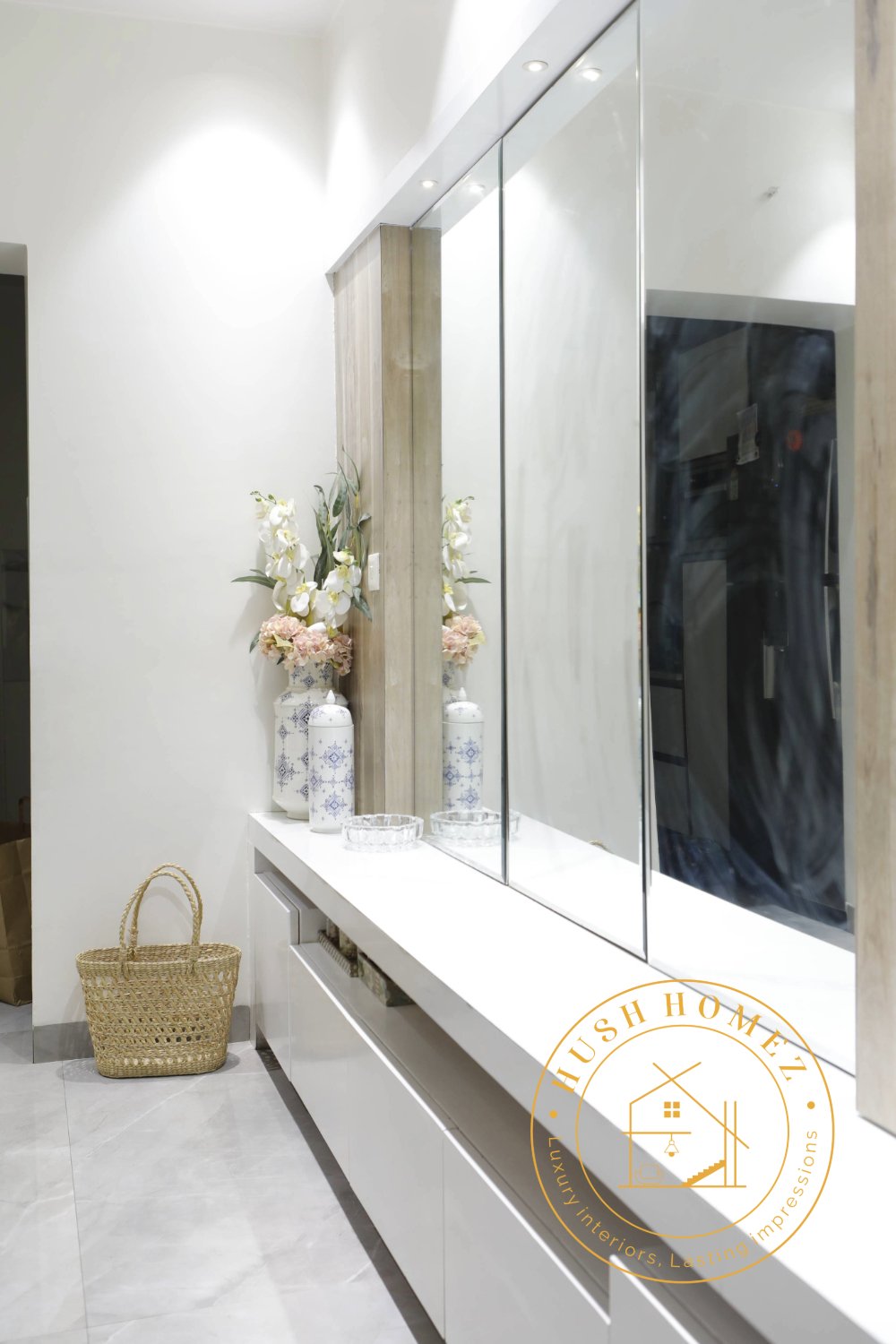
Introduction
Sustainable design is more than just a trend; it’s a necessity for our planet’s future. As we become more aware of our environmental impact, sustainable design practices are gaining importance in both residential and commercial construction. This article explores the principles of sustainable design, its benefits, and practical steps you can take to build a greener future.
Understanding Sustainable Design
Definition and Goals
Sustainable design aims to reduce negative impacts on the environment and improve the health and comfort of building occupants. The main goals include minimizing resource consumption, reducing waste, and creating healthier environments.
Key Principles
Key principles of sustainable design include energy efficiency, water conservation, use of sustainable materials, and improving indoor environmental quality. These principles guide the development of eco-friendly buildings that are both functional and aesthetically pleasing.
Benefits of Sustainable Design
The benefits of sustainable design are numerous. Environmentally, it reduces pollution and conserves resources. Economically, it can lower energy and water bills. Socially, it improves the quality of life by creating healthier and more comfortable living spaces.
Sustainable Materials
Recycled and Upcycled Materials
Using recycled and upcycled materials is a cornerstone of sustainable design. These materials reduce the need for virgin resources and minimize waste. Examples include reclaimed wood, recycled metal, and glass.
Renewable Resources
Renewable resources, such as bamboo and cork, grow quickly and can be replenished without damaging the ecosystem. These materials are durable and versatile, making them ideal for various design applications.
Low-Impact Manufacturing
Choosing materials that are produced with minimal environmental impact is crucial. This includes selecting products with low embodied energy and those that are manufactured using sustainable practices.
Energy Efficiency
Passive Solar Design
Passive solar design utilizes the sun’s energy for heating and cooling buildings. By strategically placing windows, selecting appropriate building materials, and designing for natural ventilation, you can reduce reliance on artificial heating and cooling systems.
Insulation and Glazing
Proper insulation and high-performance glazing can significantly reduce energy consumption. These measures help maintain comfortable indoor temperatures, reducing the need for heating and cooling.
Energy-Efficient Appliances
Energy-efficient appliances use less electricity and water, reducing your home’s overall environmental footprint. Look for appliances with Energy Star ratings to ensure they meet high efficiency standards.
Water Conservation
Low-Flow Fixtures
Installing low-flow fixtures, such as faucets, showerheads, and toilets, can dramatically reduce water usage. These fixtures maintain performance while using less water.
Rainwater Harvesting
Rainwater harvesting systems collect and store rainwater for use in irrigation and other non-potable applications. This reduces the demand on municipal water supplies and decreases runoff.
Greywater Systems
Greywater systems recycle water from sinks, showers, and washing machines for reuse in toilets and landscaping. This conserves water and reduces the burden on wastewater treatment facilities.
Indoor Environmental Quality
Natural Ventilation
Natural ventilation improves indoor air quality by allowing fresh air to circulate. Design features such as operable windows and vents can enhance natural airflow and reduce the need for mechanical ventilation.
Low-VOC Materials
Low-VOC (volatile organic compound) materials, such as paints, adhesives, and finishes, emit fewer harmful chemicals. Using these products improves indoor air quality and reduces health risks.
Indoor Plants
Indoor plants not only add beauty to your space but also improve air quality by filtering pollutants. They can also enhance mental well-being and create a calming environment.
Sustainable Landscaping
Native Plants
Using native plants in landscaping supports local ecosystems and requires less water and maintenance. These plants are adapted to the local climate and soil, making them more resilient.
Xeriscaping
Xeriscaping involves designing landscapes to minimize water use. This includes using drought-tolerant plants, efficient irrigation systems, and mulching to retain soil moisture.
Green Roofs and Walls
Green roofs and walls are covered with vegetation, providing insulation, reducing heat island effect, and improving air quality. They also offer additional green space in urban environments.
Waste Reduction
Construction Waste Management
Implementing construction waste management practices, such as recycling and reusing materials, can reduce the amount of waste sent to landfills. This also conserves resources and reduces environmental impact.
Recycling Programs
Establishing recycling programs in buildings helps divert waste from landfills and promotes the reuse of materials. This includes recycling paper, plastics, glass, and metals.
Composting
Composting organic waste, such as food scraps and yard waste, creates nutrient-rich soil for gardens and reduces landfill waste. It’s an effective way to manage waste sustainably.
Smart Home Technology for Sustainability
Home Automation Systems
Home automation systems can optimize energy and water use, enhancing sustainability. These systems allow you to control lighting, heating, cooling, and irrigation remotely, ensuring efficient use of resources.
Smart Thermostats
Smart thermostats learn your schedule and preferences, adjusting heating and cooling to save energy without sacrificing comfort. They can significantly reduce energy consumption and costs.
Energy Monitoring
Energy monitoring devices track your home’s energy use, providing insights into where you can make improvements. This helps you identify and address energy inefficiencies.
Sustainable Urban Design
Walkable Communities
Designing walkable communities encourages walking and cycling, reducing reliance on cars and lowering carbon emissions. Features include pedestrian-friendly streets, bike lanes, and accessible public transportation.
Public Transportation
Integrating public transportation options into urban design reduces traffic congestion and pollution. Efficient, reliable public transit systems make it easier for people to choose sustainable travel options.
Green Public Spaces
Green public spaces, such as parks and community gardens, enhance urban environments. They provide recreational areas, improve air quality, and support biodiversity.
Case Studies in Sustainable Design
Residential Examples
Examples of sustainable residential projects include homes built with energy-efficient materials, incorporating renewable energy sources, and using sustainable landscaping practices.
Commercial Projects
Sustainable commercial buildings often feature energy-efficient systems, sustainable materials, and waste reduction programs. These buildings demonstrate that sustainability and profitability can go hand in hand.
Public Buildings
Public buildings, such as schools and libraries, can serve as models of sustainability by incorporating green building practices. These projects educate the public and promote sustainable living.
Challenges and Solutions
Common Barriers
Barriers to sustainable design include higher upfront costs, lack of awareness, and regulatory hurdles. However, these challenges can be overcome with innovative solutions and supportive policies.
Innovative Solutions
Innovative solutions, such as green financing, incentives, and public-private partnerships, can help overcome barriers to sustainable design. Education and advocacy also play crucial roles.
Policy and Regulation
Supportive policies and regulations are essential for promoting sustainable design. These can include building codes, incentives for green building practices, and penalties for non-compliance.
Future Trends in Sustainable Design
Emerging Technologies
Emerging technologies, such as advanced materials, renewable energy systems, and smart home devices, are driving the future of sustainable design. These innovations promise to make buildings more efficient and eco-friendly.
Global Initiatives
Global initiatives, such as the United Nations Sustainable Development Goals, provide a framework for sustainable design practices. These initiatives promote collaboration and progress on a global scale.
Vision for the Future
The future of sustainable design is bright, with increasing awareness and commitment to environmental stewardship. As more people embrace sustainable practices, we can look forward to a greener, healthier planet.
Tips for Implementing Sustainable Design
Start Small
You don’t have to overhaul your entire home to be more sustainable. Start with small changes, such as using energy-efficient light bulbs or installing a low-flow showerhead.
Involve Professionals
Consulting with professionals, such as architects, builders, and interior designers who specialize in sustainable design, can help ensure your projects are both effective and feasible.
Continuous Learning
Stay informed about the latest trends and technologies in sustainable design. Continuous learning and adaptation are key to maintaining and improving your sustainability efforts.
Conclusion
Sustainable design is essential for creating a healthier, more sustainable future. By incorporating principles of energy efficiency, water conservation, and the use of sustainable materials, we can build environments that benefit both people and the planet. Embrace the challenge of sustainable design and take steps to make a positive impact on the world around you.
FAQs
What is sustainable design?
Sustainable design is the practice of creating buildings and environments that minimize environmental impact, conserve resources, and enhance the quality of life for occupants.
Why is sustainable design important?
Sustainable design is important because it helps reduce pollution, conserve resources, and create healthier living and working environments. It also promotes economic savings and supports long-term environmental health.
How can I make my home more sustainable?
You can make your home more sustainable by using energy-efficient appliances, installing low-flow fixtures, using sustainable materials, and incorporating renewable energy sources like solar panels.
What are some common sustainable materials?
Common sustainable materials include recycled and upcycled materials, renewable resources like bamboo and cork, and low-VOC products that improve indoor air quality.
What role does technology play in sustainable design?
Technology plays a crucial role in sustainable design by providing tools for energy and water efficiency, home automation, and environmental monitoring. Smart home devices and energy-efficient technologies help reduce resource consumption and improve sustainability.

